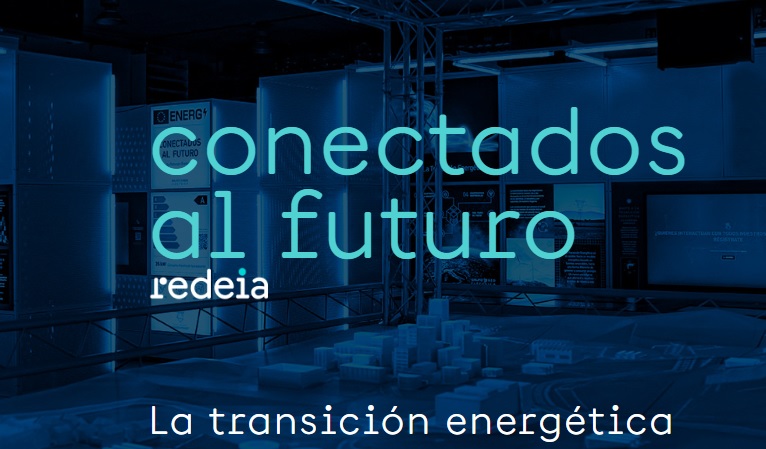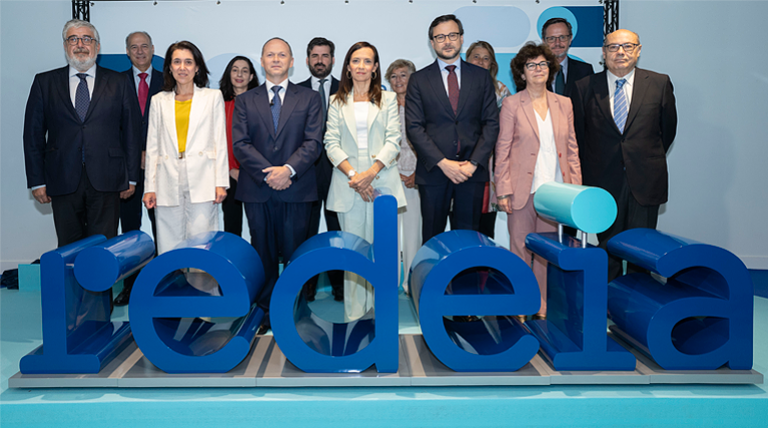We are a global operator of essential infrastructure
- The new 132 kV cable significantly strengthens the quality and security of supply and reduces dependence on fossil fuels on both islands.
- The impact of the interconnection on the environment was significantly reduced thanks to the fact that the link between the islands is mainly underwater and that the land sections of the cable on the islands are buried underground.
The new 132 kV interconnection between Lanzarote and Fuerteventura is now a reality. Red Eléctrica has successfully completed the new 132 kV inter-island link between the Playa Blanca substation on Lanzarote and the La Oliva substation on Fuerteventura.
The new cable significantly improves the security and quality of supply on Lanzarote and Fuerteventura and enables them to continue making progress in the energy transition. Thanks to this interconnection, it will be possible to maximise the evacuation of renewable energy under safe conditions for the electricity system and reduce both the dependence on fossil fuels and the CO2 emissions on both islands.
The inauguration ceremony, which took place at the Playa Blanca substation, was attended by the President of the Canary Islands, Ángel Victor Torres; the Regional Minister for Ecological Transition, the Fight against Climate Change and Territorial Planning, José Antonio Valbuena; the Commissioner for the Promotion of Sustainable Energy in Island Systems, Marc Pons; the Chairwoman of Redeia (the group to which Red Eléctrica belongs to), Beatriz Corredor; the President of the Island Council of Lanzarote, María Dolores Corujo; the Mayor of Yaiza, Óscar Noda, and the Councillor for Works and Services of La Oliva, Luis Alba.
During the event, the Chairwoman of Red Eléctrica, Beatriz Corredor, wanted to highlight "the importance of continuing to make progress in the energy transition, especially in isolated electricity systems such as the Canary Islands, where greater renewable integration is synonymous with greater energy independence", and she also reiterated the Company's commitment to the energy future of the Canary Islands with projects such as the Salto de Chira power station".
For his part, the President of the Canary Islands, Ángel Victor Torres, stressed the importance of this infrastructure between Lanzarote and Fuerteventura as it "strengthens the electricity system of the Canary Islands, contributes to moving towards the decarbonisation of our economy and enables greater penetration of clean energy". Currently, the percentage of penetration of clean energy in the Canary Islands system stands at 22 per cent, which is double what it was in 2018.
Mr. Torres announced that the work on the submarine connection between La Gomera and Tenerife will soon have its environmental impact statement approved and remarked that "there is still a long way to go, but the Canary Islands are moving towards a new, more sustainable model" thanks to the involvement of the public administrations, businesses and society in general on the Canary Islands. He also pointed out that "we will be spearheading the green transition in Europe, and to this end, we have been awarded the largest amount of funds in history: 467 million euros for the Sustainable Energy Strategy on the Islands from the Recovery, Transformation and Resilience Plan".
The President of the Island Council of Lanzarote, María Dolores Corujo, expressed her satisfaction with "the improvement of the security and supply infrastructure between Lanzarote and Fuerteventura, which are the only islands of the archipelago that currently have an inter-island link between them".
María Dolores Corujo expressed the wish for "a prompt interisland electricity link between Gran Canaria and Fuerteventura and, therefore, with Lanzarote". She justified this desire on the basis that the two eastern islands abound in wind, sun, tides and waves, but she added that "we have an insurmountable obstacle for energy storage, and that is our orography, so the electricity interconnection with Gran Canaria would give us access to the energy storage systems on this island and would contribute to achieving a decarbonised Canary Islands as soon as possible".
Furthermore, the Commissioner for the Promotion of Sustainable Energy in Island Systems, Marc Pons, expressed his conviction that "the path to decarbonisation has no way back and in order to make progress along this path, infrastructure such as the one inaugurated today, which has required public-private collaboration and a special attention to the sensitivities of the territories and a focus on providing a robust electricity transmission system, are essential”, and he added that the role of Red Eléctrica is fundamental in this effort".
An interconnection route that is both environmentally and socially responsible
Red Eléctrica has invested 36 million euros in this link, with a route that uses the latest techniques in terms of environmental protection and that ensures its integration into the environment. Thus, the infrastructure consists of a 14.5 km underwater route, running at a maximum depth of 80 metres, and two land-based underground cable sections of 1.8 km on Lanzarote and 645 metres on Fuerteventura.
Exhaustive prospecting, cartography and bathymetric mapping work were carried out in the design of the underwater cable route, which in turn provided in-depth knowledge of both the seabed and other highly relevant aspects such as currents, water and sediment quality and the biological state of the sea fauna and flora communities present along the route.
Additionally, horizontal directional drilling techniques were used for the link’s sea-coast landing points, where the cable transitions from the sea to the land by way of offshore to onshore junction chambers, to protect the cables close to the coast, while at the same time minimising its impact on the beaches and the coastal strip.
The new interconnection bolsters the other existing one, commissioned in 2005, which is a 66 kV alternating current electricity link. Thanks to the new link and the redundancy provided by this new interconnection, the robustness of the electricity system on both islands is strengthened and the possibilities and conditions for their maintenance are improved, something that helps eliminate and/or reduce generation constraints.
Red Eléctrica’s investments in Lanzarote and Fuerteventura
Red Eléctrica has made significant investments to strengthen the transmission grid on these islands and which have proven essential to help cover electricity demand and integrate new renewable energy on the islands. In 2022 alone, 6 new MW of solar photovoltaic power capacity have been commissioned which, added to the existing renewable energy capacity, totals 123 MW of installed capacity (98 MW wind and 25 MW solar photovoltaic). Moreover, it should be noted that the installed renewable power capacity on these islands has almost doubled since January 2019.
Since 2011, Red Eléctrica has invested around 268 million euros in both the development of new grids and in the renovation, improvement and maintenance works of the transmission grid assets on Lanzarote and Fuerteventura. Among other facilities, 7 new substations have been built, including the new Playa Blanca, Tías and Callejones substations on Lanzarote and their connections to the grid, as well as this new submarine link between Lanzarote and Fuerteventura.
Furthermore, a major effort has been made with the renovation of practically the entire grid acquired from Unelco Endesa to adapt it to the quality standards of Red Eléctrica.
Similarly, the 2021-2026 Electricity Transmission Grid Planning contemplates the bolstering of the 132 kV axes on both islands, as well as the construction of new substations and the enlargement of existing ones, essential actions to be able to have a safe and robust electricity system that meets the current and future needs of the islands.














